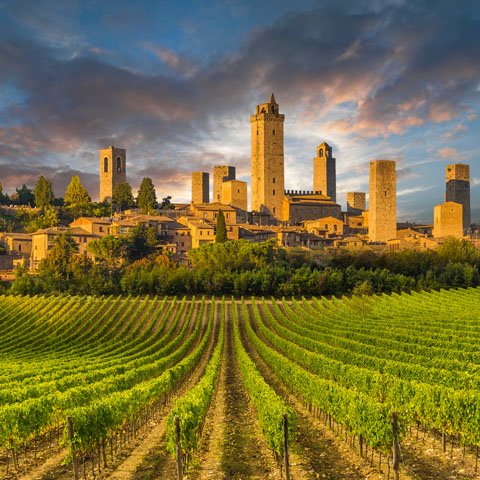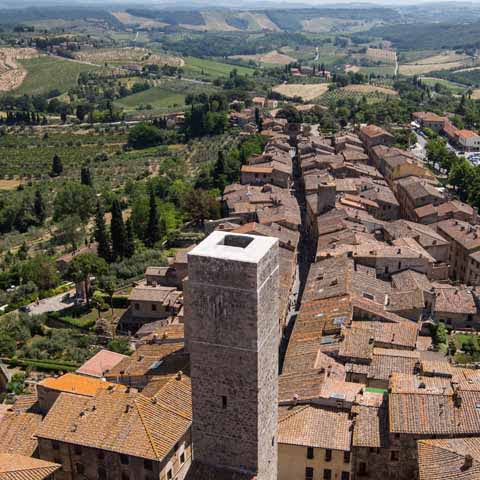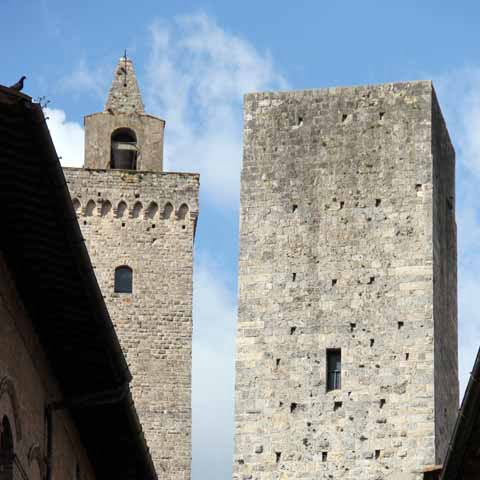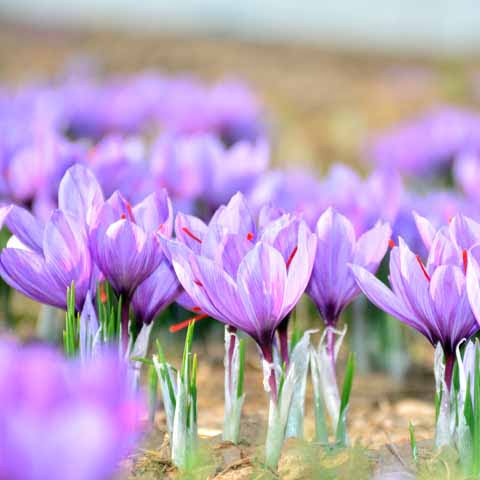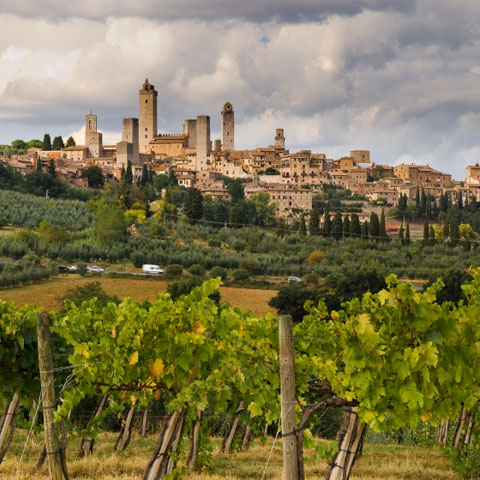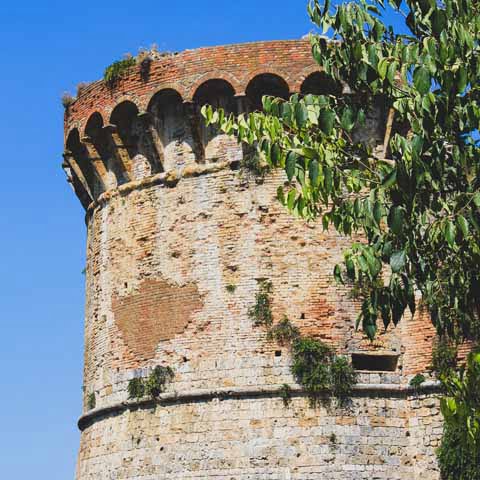During the Middle Ages and Renaissance period, San Gimignano was the ideal resting spot for pilgrims making the trip to Florence or Rome. While physical evidence remains in the twelfth century shelter found adjacent to the main gates, the town’s overall presence continues to feel history’s impact to this day. The locals benefited from their surrounding fertile land and the flow of pilgrims passing through – increasing the trade of local agricultural products including saffron and the area’s world famous Vernaccia wine. These continue to play a role in San Gimignano’s economic success – ensuring the town remains a must-see stop for any traveler.
Located in central Italy’s Tuscany region, the Etruscan town of San Gimignano was named after Modena’s Holy Bishop – St. Gimignano – who historians say protected the town from groups of threatening barbarians. The town’s namesake aided residents in experiencing a period of development and prosperity, yet the hardships that followed left their own visible mark that can be explored by visitors today. An intense rivalry between local families led to the construction of 72 towers of varying heights – 14 of which remain intact. Among the highest are Torre dei Cugnanesi, Torre Chigi, and the tallest at 177 feet – Torre Grossa. The latter offers those brave enough to climb its many steps to the top, a breathtaking, panoramic view of San Gimignano and the surrounding countryside.
In addition to the town’s skyline of powerful towers, which has resulted in the nickname “The Medieval Manhattan,” the hill town of San Gimignano is home to Gothic and Romanesque architecture as well as famous works of art. Much of the area’s numerous structures contain masterpieces of various mediums. Renowned artists including Simone Martini and Sebastiano Mainardi painted colorful frescoes on the church interiors, and sculptures and wooden statues by talented figures such as Jacopo della Quercia stand as focal points throughout.
The towers, town squares, architecture, and artwork have all contributed to San Gimignano making the UNESCO World Heritage Site List in 1990. This honor expresses the importance of the history, culture, and tradition the town has and continues to embody.
GEOGRAPHY & CLIMATE
The Tuscan town of San Gimignano is positioned in the hills of Val d’Elsa in the province of Siena. Travelers will find this unique town approximately 33 miles south of Florence and 26 miles north of Siena. The hilly landscape in and around the Italian town varies greatly in elevation and is heavily populated by locally grown crops and native trees.
The location and its topography influence the climate visitors can expect while sightseeing. Summers amongst the hills tend to be hot and slightly muggy, yet brief in duration – while winters can feature colder temperatures peaking in mid-January. Fall and spring are characterized by mild temperatures. Umbrellas are an ideal travel accessory as rain can be sporadic from early fall to late spring – winters can be particularly wet.
WHEN IN SAN GIMIGNANO
With so much history and architecture to explore while in San Gimignano, there are some sights that should not be missed along the way. At the center of it all are the town’s four main squares: Piazza Pecori, Piazza delle Erbe, Piazza della Cisterna, and Piazza Duomo.
While each of the squares should be on a traveler’s sightseeing itinerary, the latter two have notable aspects not to be missed. Piazza della Cisterna is the headliner among the squares with its triangular border of Gothic and Romanesque homes. A rustic well can be found at the center – once the town’s central water source. The focal point for Piazza Duomo is the picturesque Duomo of San Gimignano – also known as the Collegiate Church of Santa Maria Assunta. This must-see, Tuscan Renaissance cathedral is a work of art both inside and out. Detailed frescoes can be found lining the interior, including scenes from the Old and New Testaments by Bartolo di Fredi and Lippo Memmi, respectively. Famous Italian artists flocked to San Gimignano, willing to help in completing the churches’ frescoes, friezes, altars and other artistic treasures. The Chapel of Santa Fina was added to the church in 1468 and includes its own share of beautiful artwork including frescoes by Domenico Ghirlandaio and an altarpiece by Benedetto da Maiano.
Other sites to take in while in San Gimignano include the thirteenth century Church of Sant’Agostino, the Fortress of Montestaffoli and the Civic Museum located within the thirteenth century Palazzo del Popolo – or People’s Palace. As one of the country’s more popular small towns, San Gimignano has so much to offer within its bordering stone walls.
A stroll along the two major thoroughfares – Via San Giovanni and Via San Matteo – provides a glimpse into the daily lives of San Gimignano’s residents. Running north and south through town, the cobblestone streets are lined with small shops selling a variety of products including the many handcrafted items created by the locals. Cafés and restaurants serve up local recipes such as wild boar dishes and the traditional, handmade pici pasta. Though strongly influenced by Tuscan customs, the town has its own take on Italian cuisine.
For a brief change in scenery, travelers can take a short excursion to the nearby town of Certaldo. The quaint surroundings offer visitors colorful red brick buildings, street markets, and unique events including historic reenactments and folklore celebrations.
With intact historic city walls and medieval towers that soar over the center of town, San Gimignano’s reputation as one of the most picturesque areas in Italy is more than deserved. Do not miss your chance to visit this beautiful gem tucked away in the scenic Tuscan countryside.
Travel Guides
The Tuscany Region of Italy
The Cities of Tuscany, Italy
